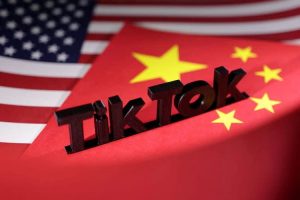(ATF) So what’s the deal with digital currencies? Currency wars? Bitcoin, Libra and everything else in between? Central bank digital currencies versus decentralised cryptocurrencies?
Much recent discussion has pitched the issue in the context of the evolving imbroglio that is global geopolitics post-Covid-19. With increasing tensions between the world’s two largest economies – the USA and China – many are wondering if the advances made by the People’s Bank of China (PBoC) with their Digital Currency Electronic Payments (DCEP) project presage the decline of the US dollar as the global reserve currency. The issue has been framed as one of a progressive demise of the dollar, to be replaced by an eRMB.
I would suggest that this is not necessarily the best question to ask. The USD makes up over 40% of global trade settlements; the RMB 2%. Rather, my proposition is that the development and very soon, the deployment of an eRMB, presages the expansion of a new architecture of international trade that is far more digital than ever before, and which offers the possibility of intensified trade and value flows across national borders in the absence of trust. How other countries respond and adapt in this rapidly evolving space remains an open question; but, however we look at the geopolitical question, there is no getting away from the pivotal role that will be played by developments emerging out of Beijing.
The certitude of post-WW2 Pax Americana has now given way to a fluid, multi-polarity. Today, the world of cross-border interactions is less certain than ever. The emerging contours are being shaped by a broad range of national concerns. There is no doubt that China, and its national policy and strategic ambitions, is a key actor in this unfolding narrative. China’s Belt and Road Initiative (BRI) has evoked both awe and critical scrutiny. Great power military dynamics dominate discourse on the evolving contours of the Asia-Pacific theatre. More recently, the evolving shape of the world is increasingly framed as a strategic contest between the USA and China, with disputes emerging in trade, military posturing, technology and intellectual property.
Remarkably steady
Against this backdrop, Chinese policy and strategic directions have remained remarkably steady over the past few years. The PBoC began research on digital currencies in 2016, and possibly a little earlier. This was before blockchain technologies captured the global imagination. The PBoC has in recent months been testing the DCEP in a number of cities. The DCEP is expected to be rolled out at some point in the near future.
In 2016, China also announced the Healthy China 2030 strategy. While explicitly focused on maintaining and improving the health and safety of the country’s food and pharmaceutical sectors, a key component in HC2030 is the digitalisation of cross-border supply chains to enhance governance, supervision and management.
In late November 2019, new guidelines focused on promoting high-quality trade were announced by the Central Committee and State Council. A further 46 cities were added as e-commerce pilot trade zones in April 2020. Recent policy pronouncements have emphasised the capacity of a rejuvenated domestic consumption to drive growing imports into China, and catalyse the revitalisation of economies across the globe, post-Covid-19.
Trade continues to sit at the heart of China’s development model.
The thrust of public policy has been geared towards increased digitalisation of value flows. Dependable data, through processes that effectively mitigate risks of information capriciousness, are the bedrock of trading relationships between strangers where trust is not present. In this environment blockchain technologies are being promoted as the digital ballast to ensure data dependability in environments involving many actors.
Data-enabled value flows
Product supply chains are emerging as the locus classicus of blockchain technical implementations, as institutions and circuits of value transformation and flow are re-fashioned. Supply chains are vectors of data-enabled value flows, in which information asymmetry has historically defined the perils of business and cross-border trade. Information about things and people flow one way, so that money data flows the other way. Through various initiatives, China is envisaging and building a data-enabled world of economic value circuits, in which supply chains are reconceptualised as circuits of value in motion. Data functions as the lingua franca of value transformations and exchange in complex economies that are characterised by local, national and transnational divisions of labour.
China is an international leader in electronic payments. Domestic initiatives around smartphone-enabled payments capabilities since the early 2010s have laid the groundwork for a more ambitious move – the Digital Currency / Electronic Payments (DCEP) project – the central bank’s digital Yuan / RMB initiative.
The DCEP is programmable money. Its issuance can be programmed to enable certain uses, and prohibit others. It can be ‘guided’ to support particular transactions amongst approved actors, and thereby mitigate risks associated with capital outflows, money laundering and the funding of illicit activities. The DCEP is part and parcel of a series of initiatives aimed at creating the conditions necessary for the adoption of the eRMB as a transnational trading currency without at the same time opening up China’s capital accounts to global market dynamics.
While some commentators have speculated that the DCEP has been developed with the ambition of becoming the ‘common denominator’ in trade payments in place of the American dollar, I suggest that China’s ambitions are more grounded and less grandiose.
There is little expectation that the US dollar will be usurped. However, the DCEP will make it possible for progressive growth in non-USD denominated transnational transactions.
Rather than see one currency replaced by another, the emergence of the DCEP is more likely to presage another dimension to multipolarity in the next few decades of the 21st century. A blockchain-enabled network of data verisimilitude is the dependable basis upon which DCEP-denominated transactions can take place.
























